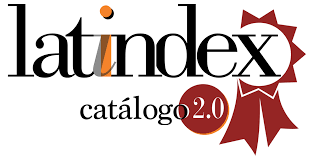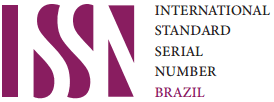Prevalence of psychopharmacology and psychotherapy in the treatment of depression in a psychiatric outpatient clinic at a quaternary hospital
DOI:
https://doi.org/10.25118/2763-9037.2018.v8.310Keywords:
Depressive disorder, mental health, psychopharmacologyAbstract
estimated to become the second leading cause of disability worldwide by 2030. The use of psychotropic medications as tools to improve quality of life has increased in the last decades all over the world. Objective: To analyze the prevalence of the use of psychotropic medications and psychotherapy in the treatment of depression at the university hospital at Faculdade de Medicina de Itajubá, Itajubá, state of Minas Gerais, Brazil. Methods: This was an observational, descriptive, cross-sectional, retrospective study using descriptivestati sti cs. The BioEstat 5.0 program and the paired t-test were used, based on a 99% confi dence level. A total of 289 individuals with depression, both male and female, parti cipated in the study. Parti cipants were aged up to 60 years and were residents of the municipality of Itajubá and the neighboring micro-region. Results: Of the 183 women treated with psychoacti ve medicati ons, 96 (52.46%) were referred for psychotherapy. The most frequently prescribed medicati on classes were selecti ve serotonin reuptake inhibitors (SSRI; 59.96%), benzodiazepines (BZD; 51.25%), and tricyclic anti depressants (TCA; 12.02%). Among men, psychotherapy was indicated for 37.26%; the most frequently indicated psychotropic medicati ons were SSRI (39.3%), BZD (14.6%) and TCA (5.87%). Conclusion: The data analyzed corroborated the multi factorial nature of mental health problems, allowing the doctor-pati ent relati onship to be strengthened, which is indispensable for adherence to treatment. We suggest a combined treatment strategy, framed within a comprehensive model, integrati ng psychotherapy and psychopharmacology through structured sessions and psychoeducati on.
Downloads
Metrics
References
World Health Organization (WHO). World health statistics 2010 [Internet]. 2010. [cited 2018 Apr 18]. www.who.int/whosis/whostat/2010/en/
World Health Organization (WHO). Relatório mundial da saúde - saúde mental: nova concepção, nova esperança [Internet]. 2001 [cited 2018 Apr 18]. http://www.who.int/whr/2001/en/whr01_djmessage_po.pdf
Cambricoli F. Mortes por depressão crescem 705% [Internet]. Estadão. 2014 Aug 17 [cited 2017 Nov 01]. saopaulo.estadao.com.br/noticias/geral,mortes-por-depressao-crescem-705-imp-,1545121
Neira LR. Aspectos generales y clínicos de la depresión. In: Grupo de psiquiatras latinoamericanos para la docencia en depresión.
Diagnóstico y tratamiento de La enfermidad depresiva. México: AWWE; 2013. p.19-26.
Porto JA. Conceito e diagnóstico. Rev Bras Psiquiatr. 1999;21:6-11.
Sarin L. Classificación y evolución de La enfermedad depressiva. In: Grupo de psiquiatras lati noamericanos para la docência em depresión. Diagnósti co y tratamiento de La enfermidad depresiva. México: AWWE; 2013. p.35-42.
Associação Americana de Psiquiatria. ManualDiagnósti co e Estatí sti co de Transtornos Mentais, 4ª edição (DSM-IV). Porto Alegre: Artes Médicas; 1995.
American Psychiatric Associati on. Diagnosti c and Stati sti cal Manual of Mental Disorders, Fift h Editi on (DSM-5). Arlington: American Psychiatric Publishing; 2013.
Organização Mundial da Saúde (OMS). Classifi cação de transtornos mentais e de comportamento da CID-10: Descrições Clínicas e Diretrizes Diagnósti cas. Tradução de Dorgival Caetano. Porto Alegre: Artes Médicas; 1993.
Brasil, Ministério da Saúde, Insti tuto Brasileiro de Geografi a e Estatí sti ca (IBGE), Ministério do Planejamento, Orçamento e Gestão. Pesquisa Nacional de Saúde 2013. Percepção do estado de saúde, esti los de vida e doenças crônicas [Internet]. 2014 [cited 2018 Apr 18]. t p://ft p.ibge.gov.br/PNS/2013/pns2013.pdf
Pott er WZ, Hollister LE. Fármacos anti depressivos. In: Katzung BG. Farmacologia básica e clínica. 9ª ed. Rio de Janeiro: Guanabara Koogan; 2005. p. 404-15.
Liskow PA, Perry PJ, Alexander B. Psychotropic drug handbook. In: Anti depressants. 7th ed. Washington: American Psychiatric Press; 1997. p.131-220.
Katz MM, Koslow SH, Maas JW, Frazer A, Bowden CL, Casper R, et al. The ti ming, specifi city and clinical predicti on of tricyclic drug eff ects in depression. Psychol Med. 1987;17:297-309.
Quitkin FM, Rabkin JD, Markowitz JM, Stewart JW, McGrath PJ, Harrison W. Use of patt ern analysis to identi fy true drug response. A replicati on. Arch Gen Psychiatry. 1987;44:259-64.
Alberniz A, Holmes J. Psychotherapy integrati on: its implicati on for psychiatry. Br J Psychiatry. 1996;169:563-70.
Brasil, Insti tuto Brasileiro de Geografi a e Estatístic[Internet]. 2016 [cited 2017 Oct 31]. https://cidades.ibge.gov.br/brasil/mg/itajuba/panorama
Karasu TB. Psychotherapy and pharmacotherapy: toward an integrati ve model. Am J Psychiatry. 1982;139:1102-13.
Marcus ER. Integrati ng psychopharmacotherapy, psychotherapy and mental structure in the treatment of pati ents with personality disorders and depression. Psychiatr Clin North Am. 1990;13:255-63.
Powell AD. The medicati on life. J Psychother Pract Res. 2001;10:217-22.
Lima MS. Epidemiologia e impacto social. Rev Bras Psiquiatr. 1999;21:1-5.
Andrade LHSG, Viana MC, Silveira CM. Epidemiologia dos transtornos psiquiátricos na mulher. Rev Psiquiatr Clin. 2006;33:43-54.
Kessler RC, McGonagle KA, Zhao S, Nelson CB, Hughes M, Eshleman S, et al. Lifeti me and 12-month prevalence of DSM-II-R psychiatric disorders in the United States. Results from the nati onal comorbidity survey. Arch Gen Psychiatry. 1994;51:8-19.
Corso AN, Costa LS, Fleck MPA, Heldt E. Impacto de sintomas na qualidade de vida de usuários da rede básica de saúde. Rev Gaucha Enferm. 2009;30:257-62.
Organização Mundial da Saúde (OMS). Relatório sobre a saúde no mundo 2001: saúde mental: nova concepção, nova esperança [Internet]. 2001 [cited 2018 Apr 18]. www.nescon.medicina.ufmg.br/biblioteca/registro/referencia/0000000155
Santos ÉG, Siqueira MM. Prevalência dos transtornos mentais na população adulta brasileira: uma revisão sistemática de 1997 a 2009. J Bras Psiquiatr. 2010;59:238-46.
Fleck MPA, Lima AFBS, Louzada S, Schestasky G, Henriques A, Borges VR, et al. Associação entre sintomas depressivos e funcionamento social em cuidados primários à saúde. Rev Saude Publica. 2002;36:431-8.
Hyman S, Chisholm D, Kessler R, Patel V, Whiteford H. Mental disorders. In: Jamison DT, Breman JG, Measham AR, Alleype G, Claeson M, Evans DB, et al. Disease control prioriti es in developingcountries. New York: Oxford University; 2006. p.605-25.
Schramm JMA, Oliveira AF, Leite IC, Valente JG, Gadelha AMJ, Portela MC, et al. Transição epidemiológica e o estudo de carga de doença no Brasil. Cienc Saude Coleti va. 2004;9:897-908.
Saff er PL. O desafi o da integração psicoterapia psicofarmacoterapia: aspectos psicodinâmicos. Rev Psiquiatr RS. 2007;29:223-32.
Frey BN, Mabilde LC, Eizirik CL. A integração da psicofarmacoterapia e psicoterapia de orientação analítica: uma revisão crítica. Rev Bras Psiquiatr. 2004;26:118-23.a (IBGE). Índice de desenvolvimento humano municipal – IDHM – Minas Gerais – Itajubá
Downloads
Published
How to Cite
Conference Proceedings Volume
Section
License

This work is licensed under a Creative Commons Attribution-NonCommercial 4.0 International License.
Debates em Psiquiatria allows the author (s) to keep their copyrights unrestricted. Allows the author (s) to retain their publication rights without restriction. Authors should ensure that the article is an original work without fabrication, fraud or plagiarism; does not infringe any copyright or right of ownership of any third party. Authors should also ensure that each one complies with the authorship requirements as recommended by the ICMJE and understand that if the article or part of it is flawed or fraudulent, each author shares responsibility.
Attribution-NonCommercial 4.0 International (CC BY-NC 4.0) - Debates em Psiquiatria is governed by the licencse CC-By-NC
You are free to:
- Share — copy and redistribute the material in any medium or format
- Adapt — remix, transform, and build upon the material
The licensor cannot revoke these freedoms as long as you follow the license terms. Under the following terms:
- Attribution — You must give appropriate credit, provide a link to the license, and indicate if changes were made. You may do so in any reasonable manner, but not in any way that suggests the licensor endorses you or your use.
- NonCommercial — You may not use the material for commercial purposes.
No additional restrictions — You may not apply legal terms or technological measures that legally restrict others from doing anything the license permits.






























